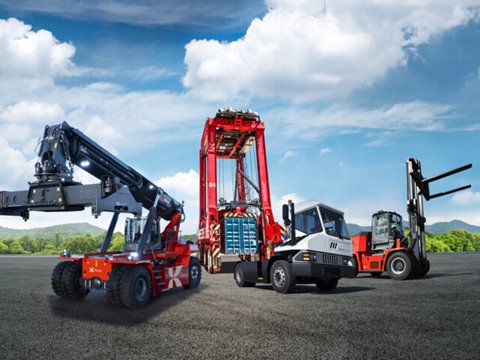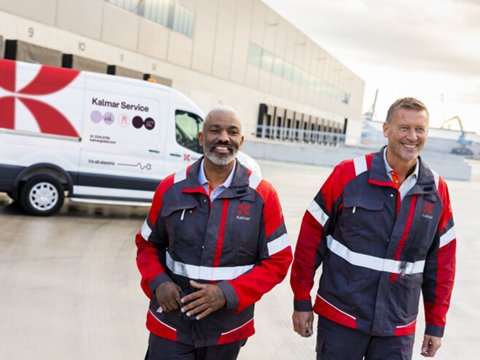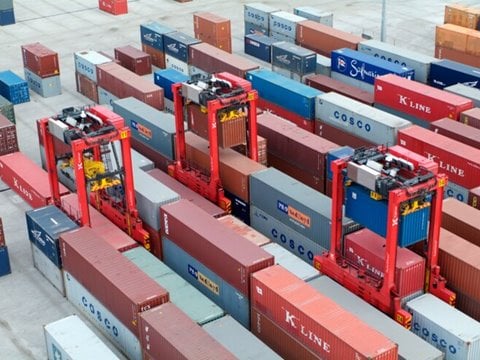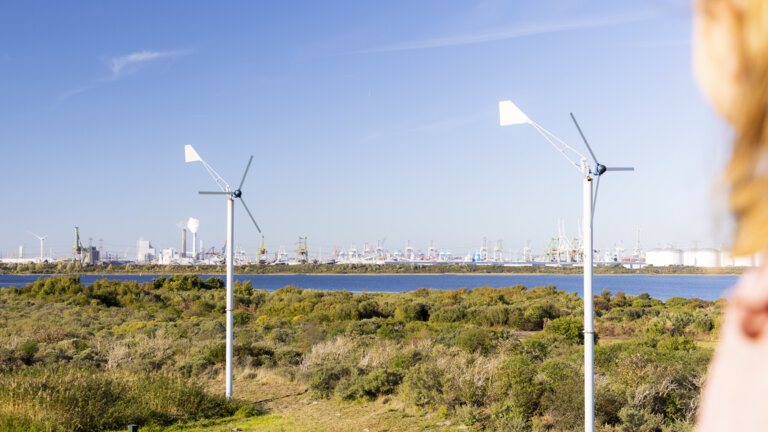The heavy material handling industry, in which Kalmar operates, has a significant carbon footprint, as the majority of the equipment used in the industry still runs on fossil fuels. Our biggest climate impact and, consequently, mitigation potential, lies in our value chain, as value chain emissions constitute more than 99 percent of our total emissions.
We are committed to reducing greenhouse gas emissions in line with the 1.5°C warming scenario, which is the most ambitious goal of the Paris Agreement. Kalmar has approved near and long-term science-based emissions reduction targets with the Science Based Targets Initiative (SBTi).
Near-term targets:
- Kalmar Oyj commits to reduce absolute scope 1 and 2 GHG emissions 90% by 2030 from a 2023 base year.*
- Kalmar Oyj also commits to reduce absolute scope 3 GHG emissions from purchased goods and services, upstream transportation and distribution, use of sold products and downstream leased assets 40% within the same timeframe.*
*The target boundary includes land-related emissions and removals from bioenergy feedstocks.
Long-term targets:
- Kalmar Oyj commits to maintain a minimum of 90% absolute scope 1 and 2 GHG emissions from 2030 through 2045 from a 2023 base year.*
- Kalmar Oyj also commits to reduce absolute scope 3 GHG emissions from purchased goods and services, upstream transportation and distribution, use of sold products and downstream leased assets 90% by 2045 from a 2023 base year.*
*The target boundary includes land-related emissions and removals from bioenergy feedstocks.
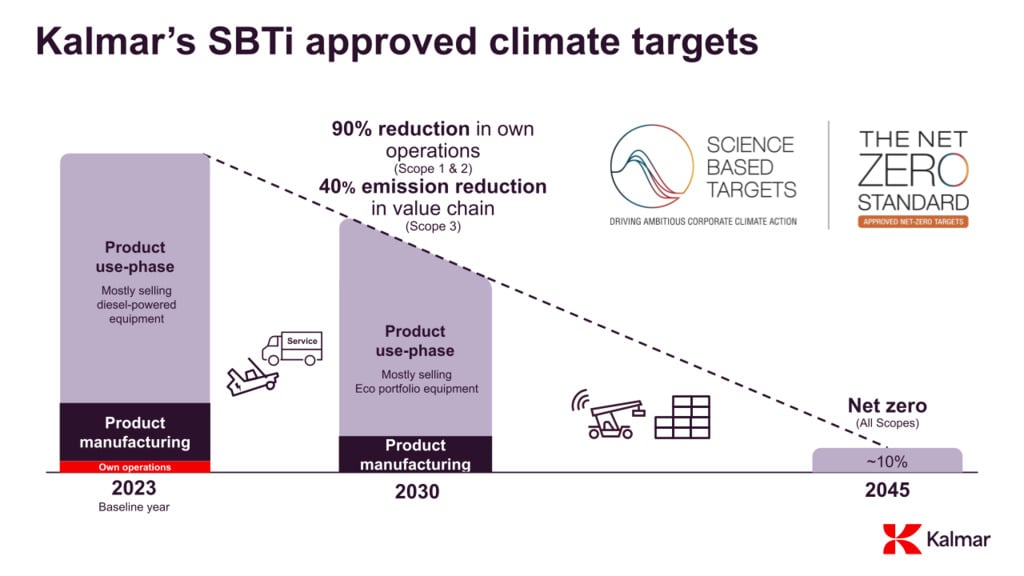
Our biggest emission reduction potential lies in our downstream, as greenhouse gas emissions related to the use of sold products constitute approximately 77 percent of our total emissions. The second biggest reduction potential lies in our upstream, within the purchased goods and services category, which forms approximately 19 percent of our total emissions. Due to the light assembly-only operations, the impact of Kalmar’s own operations is relatively minor: under one percent of our total greenhouse gas emissions.
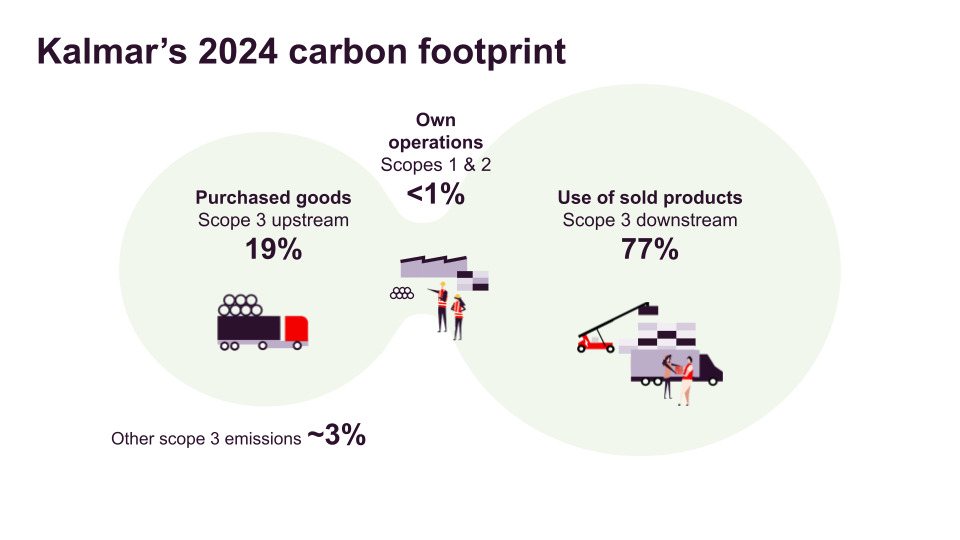
In the downstream of the value chain, greenhouse gas emissions arising from the use of sold products are high, due to the product's long lifetime and the use of diesel engines. Therefore, increasing the sales of the Eco Portfolio plays a vital role in decarbonising our downstream, as the eco portfolio includes the equipment and services that improve customers’ sustainability, through electrification and lifecycle solutions.
In the upstream of the value chain, the manufacturing of steel structures for Kalmar’s equipment is the major contributor to greenhouse gas emissions in the purchased goods and services category. Therefore, Kalmar strives to secure early access to low-emission steel on the market and increase the share of it used in the equipment.
Within its own operations, the majority of the company's greenhouse gas emissions originate from the fuel used by the company’s service fleet, and from the consumption of electricity at its facilities. Kalmar seeks to transform its own operation by phasing out fossil energy and improving the energy efficiency of its own facilities. In order to reach carbon neutrality, Kalmar plans to increase remote services and transition to low or zero-emission vehicles in its service fleet as well as heavy lifting equipment used in factories. Kalmar also plans to increase the share of fossil free electricity in its operations.
